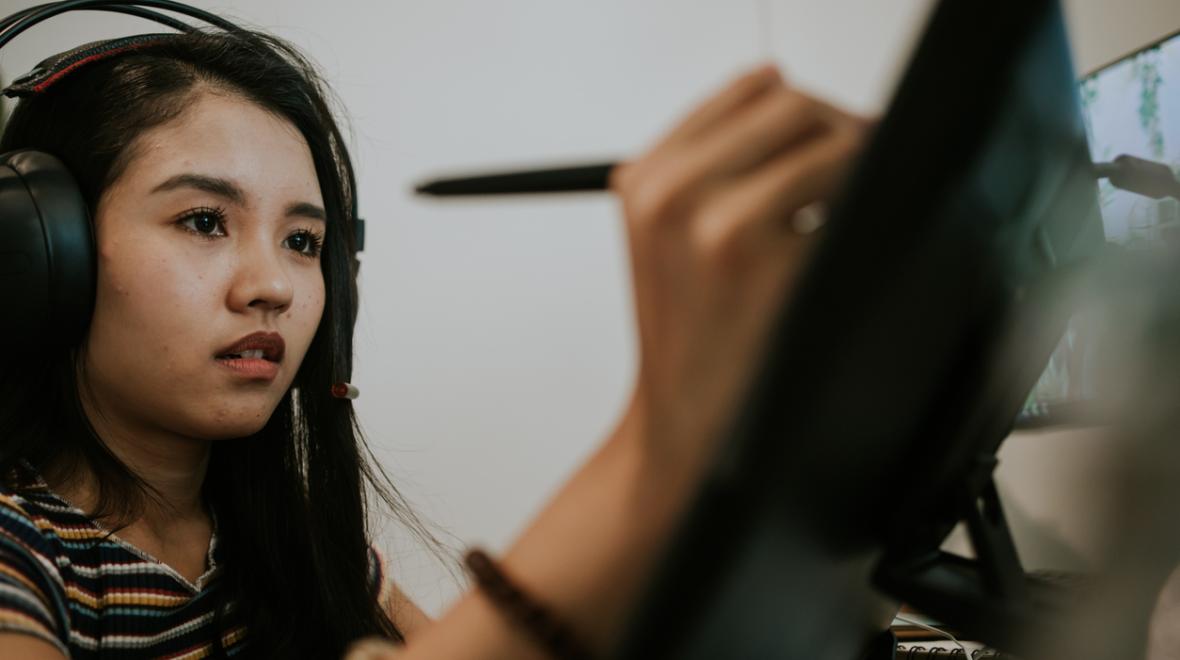
Editor’s note: This article was sponsored by the Washington College Savings Plans (WA529).
When it was time to think about college, Mimi Toom, now a junior at DigiPen Institute of Technology in Redmond, knew exactly what she wanted to do. “I’ve been drawing all of my life,” she says. “Just as a kid, what I’ve gravitated toward was art.” The more she learned about DigiPen’s animation program, it seemed like the perfect place for her. When she attended a preview day at the school’s Redmond Campus with her mother, she was sure of it. “I was like, ‘Okay, this is what I want to do,’ ” she says.
There was only one problem. It costs about $40,000 a year to attend DigiPen. But Toom’s family had been saving, and are now covering her tuition through a combination of financial tools, including a scholarship and a tax-advantaged 529 savings plan offered through the state, known as the GET program.
As the cost of higher education gets more expensive, families typically rely on a combination of financial aid sources to pay for it, and Washington state offers two types of 529 savings plans that can help. One, the DreamAhead College Investment Plan, resembles a Roth IRA account, because of the investment options available and the structure of tax-free growth. But GET, the program Toom’s family chose, is a prepaid tuition program. That means it allows parents and guardians to buy units of tuition long before their kids are thinking about college. The units’ value is based on the price of tuition at the most expensive public university in the state, but they can ultimately be used at any accredited institution in the country and many around the world.
Toom and her family’s experience with GET isn’t unusual, but some might think it is: People commonly assume 529 plans like GET and DreamAhead can only be used for traditional four-year degree programs. But as long as the program accepts the Free Application for Federal Student Aid (FAFSA) form, these savings plans can actually be used for a variety of postsecondary education experiences — and frequently are, according to Becky Thompson, director of student financial assistance at the Washington Student Achievement Council.
Thompson says GET funds have been used to cover tuition bills at a variety of postsecondary programs and schools, including art schools like Cornish College of the Arts, hair design and beauty schools like Gene Juarez Academy, specialized construction programs like the Northwest School of Wooden Boatbuilding, and aviation industry training like the type offered at International Air and Hospitality Academy.
Students commonly choose these kinds of postsecondary experiences, says Thompson. “The fact right now is that higher education opportunities are much broader than the traditional image of an 18- to 22-year-old going to college, living in a residence hall, working on a bachelor’s degree,” she says. “Actually, most American college students are different from that stereotype, and really pursuing all sorts of pathways: apprenticeships, for example, short-term certificates in things like health care, information technology, manufacturing and others.”
These certifications offer advantages: Many programs Thompson mentioned allow students to land jobs that pay well “in a time frame measured in months in some cases, rather than years,” she says. They also don’t necessarily preclude continuing on to a degree program. “One example that tends to come up right now is a student who might quickly become a medical assistant, and work for a while and then work on a degree in nursing or other health-care areas,” she says.
Steve Toom, Mimi’s father, says this versatility was part of GET’s appeal in preparing for his children’s postsecondary education. “That was part of the reason why we gravitated toward it,” he says. “We have four children. Just in case one or all four children wanted to go, it would give us more flexibility.”
At Digipen, Toom is living out what that flexibility can look like. She’s a resident adviser and also curates fun and informational experiences and events for residents. The animation program, she says, is making her a better artist. She specializes in character rigging and story direction, in part because of how important stories have been to her. “My goal really as an artist is to create stories that will be impactful for families and people that are just going through things, because growing up I really looked at films and TV shows as an escape,” she says.
“I know that Mimi will be successful,” says her mother, Melinda Toom. “We’re excited to see her future.”
GET and DreamAhead, the Washington college savings plans. GET enrollment is open Nov. 1–May 31; DreamAhead enrollment is open year-round.
|
Sponsored by:  |
|
|









